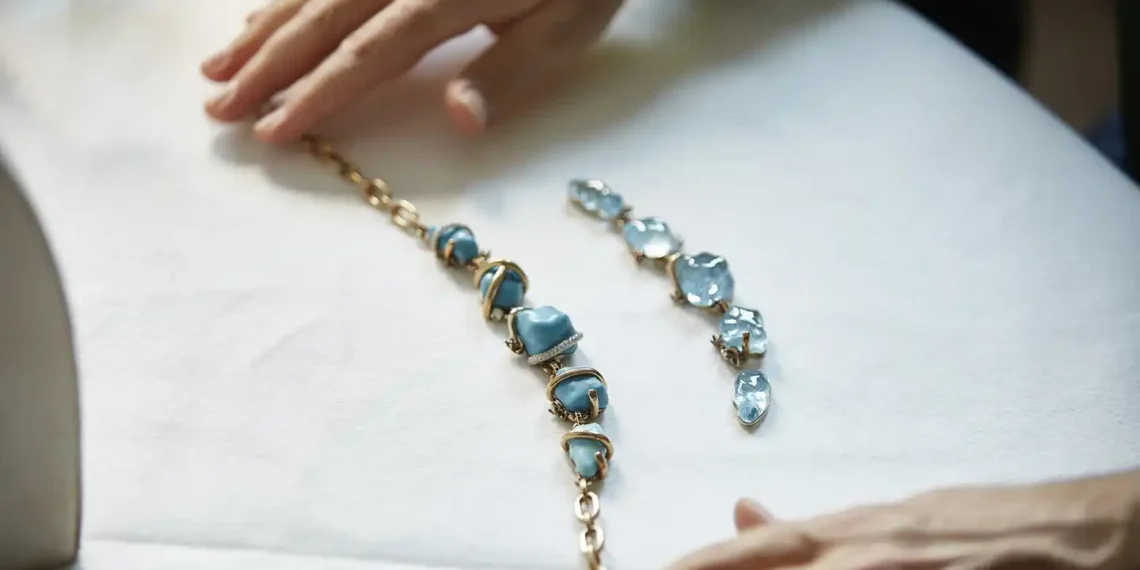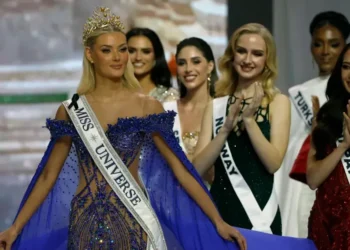Rarity Over Perfection: Why Jewelers Are Falling for ‘Ugly’ Gems
For decades, the jewelry world has obsessed over precision: the flawless clarity, the perfect cut, the sparkling brilliance of diamonds and precious stones. Terms like “IF Type IIa”—diamonds so pure they show no inclusions under magnification—have ruled the industry’s definition of beauty and value.
But that story is changing.
Once dismissed as flawed, dark, or just plain odd, imperfect gems are now stealing the spotlight. High-end jewelers are championing stones that break the traditional rules—those with unique inclusions, unusual colors, and cuts that don’t sparkle in the expected way. The new mantra? Rarity and character trump flawless perfection.
Pomellato’s Bold New Aesthetic
Leading this shift is Pomellato, the Milanese jewelry house that, five years ago, dared to challenge centuries of convention. Their first high jewelry collection turned away from the classic “big four” gems—diamonds, rubies, sapphires, and emeralds—in favor of stones that don’t sparkle, and sometimes aren’t even faceted.
Pomellato’s recent pieces include a necklace of large, smooth aquamarines shaped as if by the sea itself, crossed with delicate diamond threads resembling sailor’s ropes holding precious pebbles. Another piece draws inspiration from Milan’s night sky, suspending smoky grey sapphires and spinels in a celestial star.
“We don’t classify stones as ‘precious’ or ‘semi-precious,’ or judge them by price,” says Stefano Cortecci, Pomellato’s gem master. “Every stone has its own identity and beauty. What truly matters is how it’s cut and used.”
Cortecci, a geologist by training, has long pushed against traditional sourcing. Instead of only buying perfectly cut stones, he selects raw gems and collaborates with cutters to create unique shapes and facets—sometimes deliberately asymmetrical—to reveal a fresh perception of beauty.
Empowering Unconventional Choices
Pomellato isn’t alone. Brazilian jeweler Ara Vartanian has made a name with upside-down black diamonds, setting the pointed end up instead of the usual top facet. Raised in a family of gem dealers, Vartanian was drawn to “imperfect” stones long before launching his brand. To him, inclusions aren’t flaws—they’re marks of character.
“My father thought I was rebellious choosing black diamonds and flipping them upside down,” he told CNN. “But it came from love. I saw beauty where others saw imperfection, and my clients felt the same.”
New Voices, New Stories
Emerging designers are also embracing these unconventional stones to tell personal and poetic stories. Belgian designer Dries Criel uses tiger’s eye—a gem symbolizing protection and courage—as the centerpiece in bold rings shaped like scarabs.
British brand Anoona’s Lunar collection features moonstone, prized for its dreamy glow, while Indian designer Ananya Malhotra incorporates brown agate, believed to bring joy and balance. Swiss jeweler Cora Sheibani highlights smoky quartz—the often overlooked “poorer cousin” of amethyst—in her latest work. Milan’s Villa Milano crafts pieces with tourmalinated quartz and even volcanic stones, celebrating the beauty in natural irregularities.
Why Imperfect Gems Are Winning Hearts
This rising trend reflects broader changes in how people buy jewelry today. Increasingly, women are purchasing pieces for themselves, seeking unique designs and emotional connections over traditional investment value. At Pomellato, 70% of clients are women—a reversal of the long-standing male dominance in the market.
“Shoppers are seeking uniqueness,” says Claudia D’Arpizio of Bain & Company. The growth of lab-grown diamonds—with their flawless uniformity—has also boosted demand for natural stones that show their rare, imperfect character. Plus, geopolitical restrictions on Russian diamonds and fierce market competition make sourcing perfect stones harder and more expensive.
Using unconventional gems lets jewelers craft distinctive pieces without soaring material costs. “Jewelry has high raw material expenses, especially gold, and limited scalability,” D’Arpizio explains. “Non-standard stones provide a creative and accessible alternative.”
Redefining Beauty, One Stone at a Time
For family jeweler Hemmerle in Munich, imperfection isn’t a drawback—it’s an essential part of a gem’s story. “Diamonds don’t need to sparkle to speak,” says Christian Hemmerle, the fourth-generation owner. “If the color is beautiful, that’s enough—even with inclusions. After all, no one looks at a gem through a microscope in everyday life.”
This evolving view celebrates the soul and rarity of gemstones—reminding us that beauty isn’t just in perfection, but in character and uniqueness.
This article was rewritten by JournosNews.com based on verified reporting from trusted sources. The content has been independently reviewed, fact-checked, and edited for accuracy, neutrality, tone, and global readability in accordance with Google News and AdSense standards.
All opinions, quotes, or statements from contributors, experts, or sourced organizations do not necessarily reflect the views of JournosNews.com. JournosNews.com maintains full editorial independence from any external funders, sponsors, or organizations.
Stay informed with JournosNews.com — your trusted source for verified global reporting and in-depth analysis. Follow us on Google News, BlueSky, and X for real-time updates.














